Empty bars, high prices and early nights: Singapore's dying nightlife could have wider repercussions
With more people working from home and rising transport costs, fewer are going out to drink after work and bars are suffering. As nightlife operators shutter, this will have a far-reaching impact on Singapore's attractiveness as a tourism hub, experts warned.
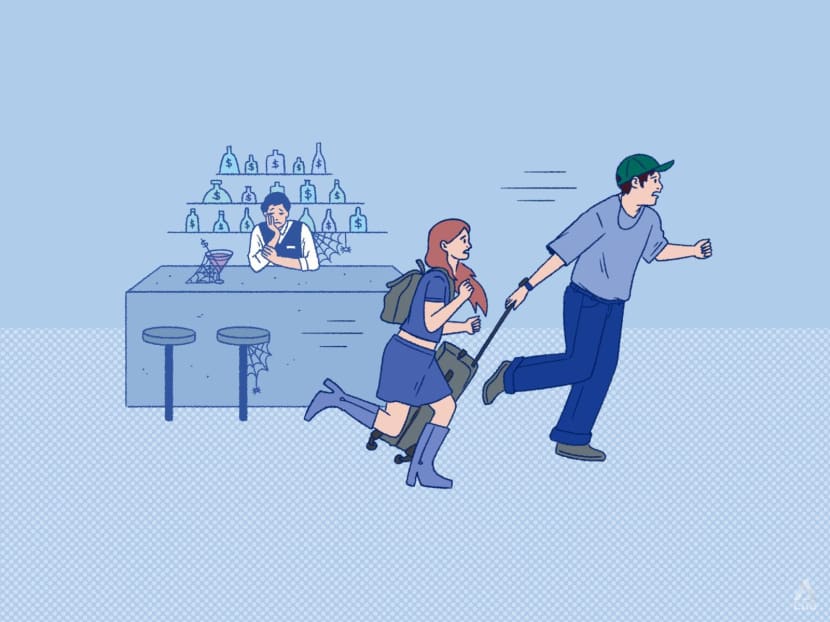
Experts warned that the diminishing vibrancy of Singapore’s nightlife could ultimately reduce the country’s appeal as a tourist destination. (Illustration: CNA/Nurjannah Suhaimi)

This audio is generated by an AI tool.
Mr Seva Baskin from eastern European country Belarus left his rented apartment in Singapore at midnight on a Friday, sometime in early November. He was intending to check out a bar, only to realise that all MRT train services for the day had already ended.
“(That timing) is quite early for European standards. Usually, when I go out in Europe, public transport works late. And in Singapore, as soon as the clock strikes 12, taxi prices double from what it was in the daytime,” the 31-year-old founder of a real estate technology startup said.
Mr Baskin, who recently spent three months in Singapore while working remotely, wanted to immerse himself in local culture. He thought that bars would be good places to mingle with Singaporeans.
However, the lack of affordable transport options in the wee hours made him wonder what nightlife in Singapore would be like, and what type of people he would see at these night establishments.
“Who can then afford to go out? Are young people going out early and then trying to be home by 12, or is it the people with money who are going out? So was I going to meet a diverse audience, or just rich people?” Mr Baskin asked.
His concerns and doubts were shared by many foreigners, Singaporeans and nightlife business operators who spoke to CNA TODAY over the past week.
Early closing times at clubs, prohibitive costs of alcohol and private transport, as well as more people choosing to stay at home have led to a lacklustre nightlife scene, which had already been badly hit by the COVID-19 pandemic.
Ms Capucine Picquet, a 20-year-old exchange student, felt that there was not much to do here due to how expensive partying has become.
Although she appreciates that entry to Zouk, a popular nightclub, is free for students, she said that alcohol prices here are at least twice as much as in France, her home country.
“Clubs here also close quite early. I remember Zouk closed at 4am. In France, it’s more like between 5am and 7am,” she added.
This early closing, combined with other factors, is not only putting pressure on bars to survive but also diminishing the vibrancy of Singapore’s nightlife. Experts warned that this could ultimately reduce the country’s appeal as a tourist destination.
Dr Lewis Lim, an associate professor of marketing practice at Nanyang Technological University (NTU), said: “Together with the late-night food and beverage (F&B) options, nightlife, with all the neon lights, loud music and fashionably dressed crowds adds energy, chicness and a bit of that naughtiness that a world-class city needs in order to attract tourists.”
Thus, even a slight reduction in the lustre of the nightlife industry should be of grave concern for the government and for industry, with long-term effects on Singapore's brand positioning and economy, he added.
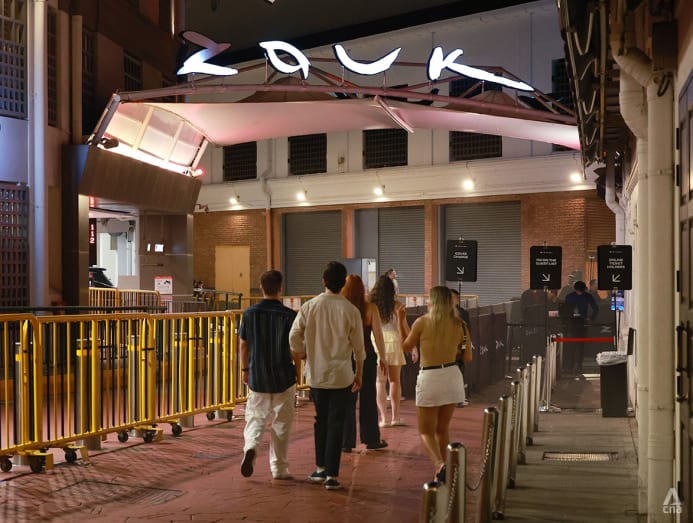
LIGHTS OUT ON NIGHTLIFE?
The most recent available data from the Singapore Department of Statistics showed that operating revenue for pubs, night clubs, discotheques, dance clubs and karaoke lounges in 2022 stood at S$284.7 million, a far cry from the peak of S$674.7 million in 2015.
The wider F&B industry, which includes bars and pubs, is facing tough times after an initial post-pandemic spike. More than 3,000 F&B establishments closed in 2024, the highest number in two decades since 2005.
Long-time players were not spared: Among them is Tippling Club, a restaurant and cocktail bar, which shuttered on Dec 31. The business in Tanjong Pagar had operated for over 16 years.
Sixteen Ounces Bar and Kitchen at the Rail Mall had its last day on Oct 26, following seven years of operation.
And wine bar Wine RVLT near the Clarke Quay area will close later this year after operating for eight years, once its current lease expires, due to higher overheads and a decline in customers.
Many more, especially independent establishments with a single outlet, are barely getting by. They told CNA TODAY that they are taking each day as it comes as they battle with increasing rental costs and competition.
Manager Mirza Jasni of craft beer bar The Otherside in Chinatown said: “We’re always striving to just keep it open for the next month. As long as we can do that, we’ll continue working.”
Head bartender Ritz Ang at Enclave bar said that revenue has dipped by 30 to 40 per cent since it reopened along Neil Road in Tanjong Pagar in May last year.
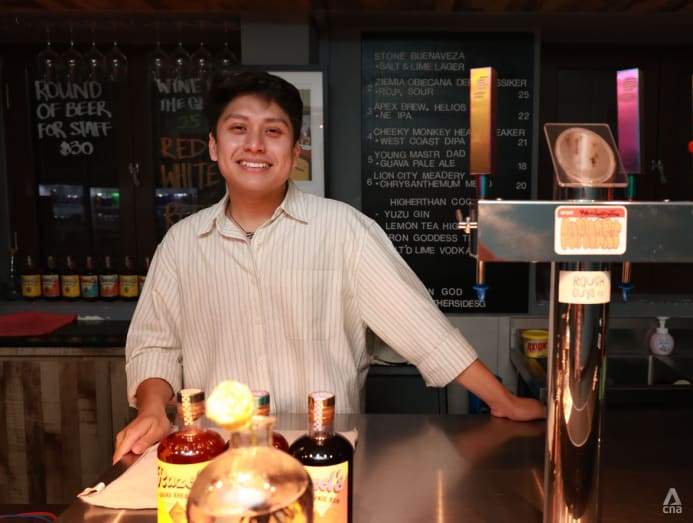
Singapore Pub Crawl, an event organiser that brings participants to different nightlife establishments around Boat Quay and Clarke Quay, said that its average group size has reduced significantly for each tour.
Mr Mogan Vithilingam, its chief operating officer, said that there used to be 40 to 50 people joining each crawl pre-COVID-19. Now, even just having 30 participants would be considered a good night, as the business struggles to reach that number.
Venues also find it more difficult to offer attractive discounts. He said that in the past, bars could give deals for as low as S$12 for two bottled beers. These days, that would be the promotional price for a single drink.
Singapore Pub Crawl’s clientele mostly consists of tourists. “I think people have forgotten the idea of pub crawls after the pandemic,” Mr Vithilingam said.
The atmosphere at key nightlife spots has also dulled. Mr Mark Ng, the co-owner of The Coup, said that the surrounding areas at Ann Siang Road and Club Street have changed dramatically.
“These streets used to be bustling at night. Before COVID-19, the roads used to be closed. The bars here would put tables and chairs on the road. People would stream in from Chinatown after dinner. Ann Siang Hill, as it was, was like a tourist attraction.”
Mr Ng added that many more establishments opened past midnight. There was a "price war" going on back then and almost every establishment was offering one-for-one or happy hour deals. These promotions are now rare.

WHY IS SINGAPORE'S NIGHTLIFE DECLINING?
A confluence of factors has contributed to this decline. Other than costs creeping up, consumers’ habits and lifestyles have changed, industry players observed.
The work-from-home culture birthed by the pandemic has had far-reaching implications, Mr Mirza from The Otherside bar said.
“Because they are at home, their F&B choices are limited to going around their residential areas, so they probably won’t drink.
“It changes the whole ball game. Bars had to close because they just weren’t getting the same footfall as last time,” Mr Mirza added.
Mr Ng from The Coup said that if people were at the office more often, they might consider grabbing drinks with colleagues nearby before going home. Since they are mostly working at home, the chances of them stepping outside to head to a bar in town are much lower.
“We run a business that requires people to come to our establishment. However, fewer and fewer people are coming out to visit bars like us and we lack the dinner crowd. The F&B sector as a whole is not what it used to be anymore.”
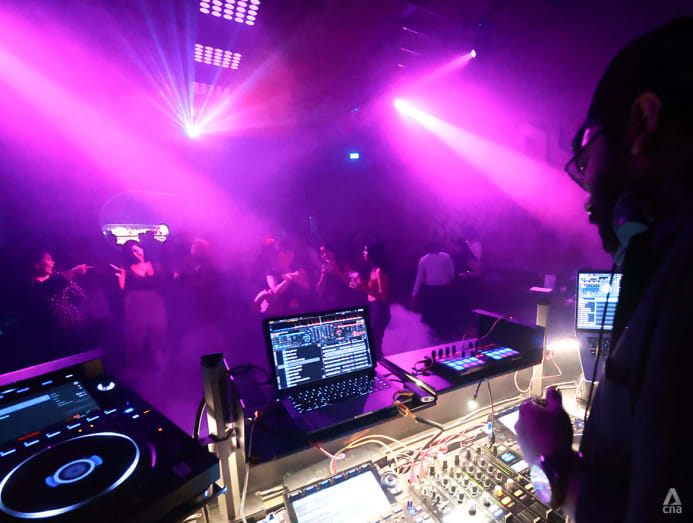
The new normal is now organising house parties, or going out to drink and meet friends once or twice a week at most, Mr Ng added.
He compared it to the era before COVID-19 when people tended to drink and party more often, even on weekdays. “There was happy hour, ladies’ night, something was going on every other weekday."
Both Mr Mirza and Mr Ng observed that some operators are pivoting to e-commerce instead of running F&B outlets. Mr Ng cited the example of craft beer shop Thirsty, which ran physical stores until 2019.
Mr Roland Utama, Thirsty’s managing director, said that the company decided to switch to an online-only business model because of manpower shortages and high rent.
“After COVID-19, we observed more consumers preferring to enjoy drinks at home, appreciating the convenience of ordering online and getting the heavy packages delivered straight to their doorstep.”
Apart from this, public transport operators SBS Transit and SMRT stopped offering their late-night bus services in June 2022. A&S Transit, a private operator, tried to fill the gap in 2023 by re-introducing two bus routes, only to suspend the service after six months.
This has left commuters who linger around in the city area past midnight with private-hire cars as the only option to return home if they need a ride
Ms Mary Arumeidas, 43, who owns pop-up events company Manifest, said that getting a taxi or private-hire car home can set her back by up to S$60 sometimes, adding that this could deter people from even leaving home at all.
“I was meeting a couple of friends on a Friday night and the fare was S$40. Frankly, I find the taxi pricing a bit vulgar. I think that is a very important aspect that needs to be addressed if the nightlife economy is going to improve.”
Ms Arumeidas reckoned that the high prices and declining nightlife would affect tourism, noting that she has foreign friends who are deterred from visiting Singapore because they heard that it is one of the most expensive cities in the world.
Young people’s preferences are changing, too. Mr Ng from The Coup observed that Gen Z-ers do not indulge in imbibing alcohol as much as the older generations.
Industry veteran Dennis Foo, the founder of the Singapore Nightlife Business Association (SNBA), echoed this sentiment, saying that the younger generation chooses to interact more on social media rather than talk to others physically over drinks.
This phenomenon is happening not only in Singapore but globally as well. British newspaper The Guardian reported that many Japanese-style pubs, or izakaya, are declaring bankruptcy in Japan as they face falling demand.
It reported that there are fewer young Japanese nowadays and they no longer believe that a good night out means drinking copious amounts of alcohol with colleagues. The pandemic led them to realise that their social lives do not have to be centred on work.
In the United States, a 2023 survey by analytics firm Gallup found that the share of young adults who drink has dropped by 10 percentage points from two decades ago.
The poll stated that the shift could be due to young people being more concerned about the health risks of drinking alcohol, believing that even moderate drinking is unhealthy.
WHY NIGHTLIFE MATTERS FOR TOURISM
Hospitality and marketing experts emphasised the crucial role of nightlife in Singapore’s tourism sector, noting that any reduction in nightlife offerings could have serious repercussions on visitor numbers.
Ms Benedicte Liew, a lecturer at Nanyang Polytechnic’s School of Business Management, said that nightlife hubs serve as cultural touch-points where residents and tourists meet, offering a dynamic blend of dining, entertainment and social experiences that enrich Singapore’s reputation as a vibrant global destination.
She added that a strong nightlife scene complements other tourism offerings, attracting international visitors seeking immersive experiences beyond traditional sightseeing. This would also boost spending in other areas such as retail and accommodation.
“Events such as the Formula 1 Singapore Grand Prix rely on a vibrant nightlife ecosystem to amplify visitor engagement. The integration of nightlife offerings such as after-race concerts, exclusive parties and extended operating hours at bars and clubs creates a festival-like atmosphere that encourages higher visitor spending and longer stays,” Ms Liew said.
Dr Lim from NTU agreed, saying that being able to enjoy a variety of entertainment activities at night adds to the overall positive experience of visiting Singapore.
“Imagine a city that goes quiet from 6pm onwards. Can it function well as a business hub and be attractive to tourists?”
Dr Lim said that if tourists are disappointed with Singapore’s nightlife scene, or are overcharged on their nights out, “they will never come back to Singapore and will also tell the whole world not to come”.
Mr Benjamin Cassim, a senior lecturer in hospitality and tourism management at Temasek Polytechnic, said that nightlife establishments provide platforms for both social and business networking, and people spending at these venues means more contributions to taxes.
“The industry also provides a good number of temporary or part-time employment opportunities and a decline in the industry would mean a drop in such jobs,” Mr Cassim added.
Mr Foo from SNBA emphasised that nightlife is an integral component of a cosmopolitan metropolis where people can work, live and play.
“Throughout my decades-long career, I have always believed in this. Nightlife may not be the biggest sector in terms of gross domestic product contributions, but it is an integral part that gels everything together. Can you imagine just going back to your room after a major concert or international conference?
“We have come a long way as a tourist destination and are now the epitome of a metropolis, the envy of the world. If we are not careful, this can go down, so we need to protect nightlife,” Mr Foo added.
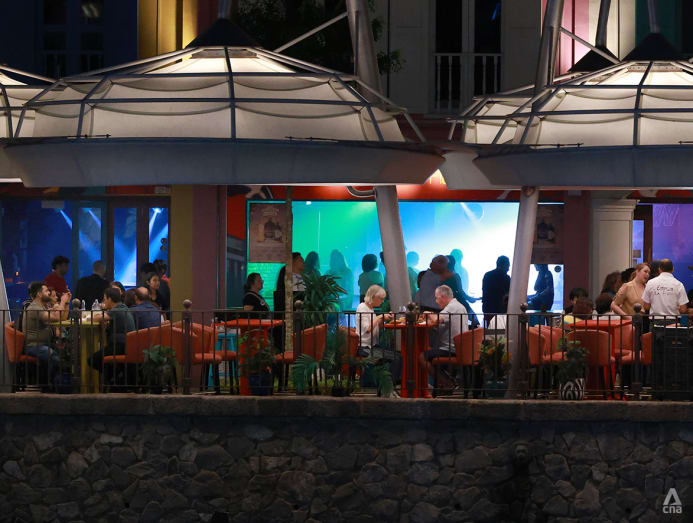
However, Mr Cassim from Temasek Polytechnic is of the opinion that even if tourists do not find Singapore's nightlife attractive, there are still many other activities they can enjoy here, so it is not a dealbreaker.
Ms Guo Teyi, director of leisure events at the Singapore Tourism Board (STB), said that the agency remains confident in the prospects for the tourism sector and the country's ability to attract quality visitors.
"We are responding to emerging trends such as wellness and there is continued investment in new experiences. For example, we are actively driving key infrastructure projects such as the Mandai Rejuvenation Project, Porsche Experience Centre, and the rejuvenation of Orchard Road," she added.
As for its nightlife, Ms Guo noted that Singapore's cocktail bars have gained strong recognition in global rankings.
The Ministry of Trade & Industry said that STB collaborates with bars, bartenders, homegrown distilleries and breweries to showcase Singapore's beverage scene.
It also pointed to initiatives by precinct stakeholders such as Singapore River One (SRO), which organises precinct-wide activities in Boat Quay, Clarke Quay and Robertson Quay.
STB supported SRO’s partnership with the Singapore FinTech Festival 2024 to deliver its After Hours at Boat Quay industry networking event, which involved 26 F&B establishments.
Ms Guo said: "We also supported the Orchard Road Business Association’s ORBar on A Great Street, a bar-hopping passport featuring eight bars in the precinct, designed to invigorate nightlife along Orchard Road."
BORING BUT SAFE?
Expatriates and tourists visiting Singapore who were interviewed by CNA TODAY had mixed feelings about its nightlife offerings.
Some appreciated the safety of the nightspots, though they pointed out that prices are higher and the nocturnal scene is less vibrant compared to neighbouring Asian countries.
Sales manager Nils Brand, 26, said that Singapore’s nightlife scene pales in comparison to Thailand’s and the after-hours venues here are “not authentic, like Disneyland”.
The German who works in Singapore added: “Haji Lane (in Kampong Glam) is a fake street. It doesn’t feel real and everyone there are just tourists. Thailand’s nightlife is more like real life to me, with actual culture.”
Mr Brand thinks that clubbers in Singapore just want to show off. “They buy stupid bottles and they’re not having fun, just filming everything with their phones. If you want real clubbing, go to Europe, go to Berlin. But not here.”
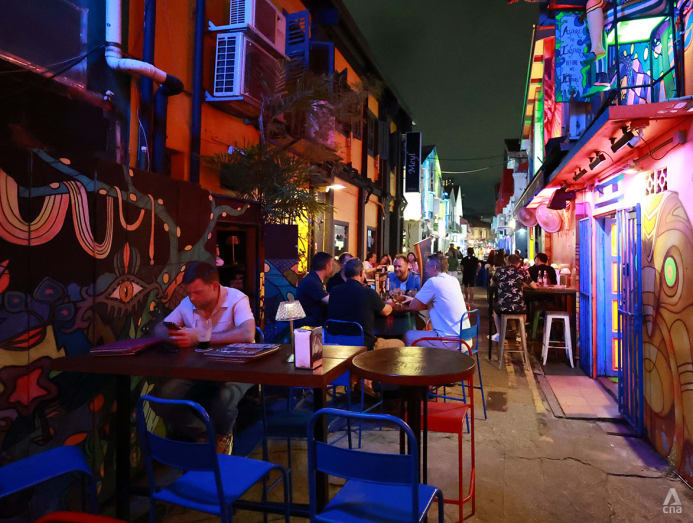
Mr Johann Tuffe, a French citizen, said that in Hong Kong, he could just follow the crowds and they would lead him to the prominent nightlife establishments such as in the entertainment district Lan Kwai Fong.
“But in Singapore, you need to know the places. You need to have friends to take you around. Or just have pure luck. The bars and pubs are very scattered around the island so you can’t just end up in the right places,” the 42-year-old said. He has been working at a hedge fund in Singapore for the last three years.
Still, with a bit of effort, a memorable night out is not impossible. Mr Baskin from Belarus was walking along Neil Road in late November when he stumbled upon a “cool-looking” crowd gathering outside Enclave bar.
After checking the bar’s Instagram page, he discovered that Enclave was hosting a performance by the Singapore Butoh Collective. Butoh is an avant-garde dance art from Japan, developed in the 1950s.
Mr Baskin immediately knew that the bar was unique and better suited to his interest in the arts. As a skilled photographer, he took photos of the event. He later connected with the organisers and artists, who liked his work.
These “like-minded locals” became his friends. They introduced him to lesser-known Instagram pages and closed Telegram groups where events that aligned with his music tastes are announced. One of these was the dark alternative music community BlackLight Tribe.
“As soon as that happened, my experience in Singapore changed dramatically because I was going to parties that I liked. Things that more diverse, interesting people go to,” Mr Baskin said.
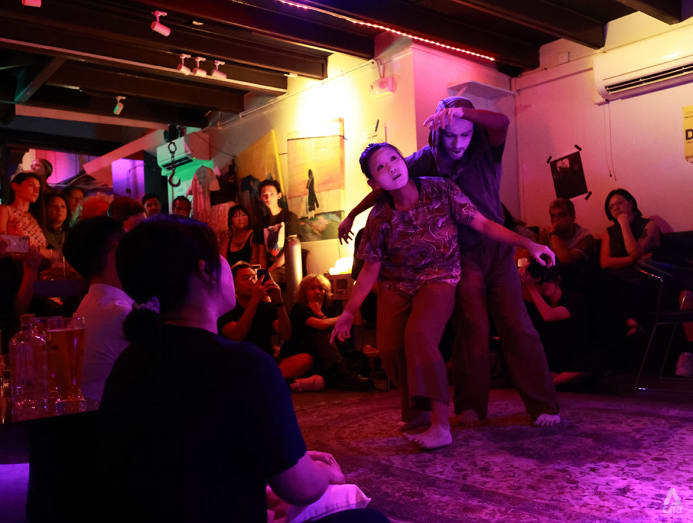
Tourists also appreciated the safety of the streets here. Mr Mark Fontes, 45, said that Singapore’s nightlife has a “cleaner and friendlier” feel to it.
The American who works as an English teacher in China said that he can sit outdoors and have a drink without beggars trying to sell him fake watches and sunglasses, a common occurrence in neighbouring countries such as Thailand.
Ms Javi M, 30, said that she feels safe here because in South America, where she is from, “everyone is really drunk on the streets”. She thinks that people in Singapore do not behave in a “weird way” and respect her boundaries, which is “really nice”.
The unemployed woman added that Singapore’s nightlife scene is not the most boring in the world.
“There is much more nightlife here than in Australia. Over there, bars usually close at around 7pm.
“So if you want to dance or get a drink, there are few places that you can go there. It’s pretty boring for someone like me, who really likes to party.”
A CRY FOR CHANGE
Nightlife operators and hospitality experts believe that a great deal of work is needed to revitalise the industry.
Dr Lim from NTU said that nightlife businesses must learn to build competitive advantages in a few ways.
First, they have to develop a niche or a concept so unique that no other operator can come close to matching their originality.
Second is to diversify their business strategy. He pointed to established players such as Zouk, which have gone beyond the traditional nightclub model by opening dining outlets and running outdoor music festivals.
“This has allowed Zouk to cover a wider spectrum of night-time entertainment and lifestyle activities for today’s consumers who want varied experiences, and to earn a larger share of the consumers’ wallets from 6pm to 6am,” he said.
Dr Lim added that businesses can “backward integrate” to own and control the supply of upstream resources such as alcoholic beverage distribution, entertainment content, production services, club design services and even real estate.
“This enables nightlife operators to exert greater bargaining power over their suppliers and to avoid being squeezed to their margins.”
From a marketing perspective, Mr Cassim the polytechnic lecturer suggested that industry players need to be more intentional in how they market themselves on social media platforms to cater to evolving consumer expectations.
“This involves showcasing enjoyable and interactive experiences for patrons, creating ‘fear-of-missing-out’ elements.” These could include a special cocktail or showing off bartender dexterity in preparing drinks.
Ms Liew from Nanyang Polytechnic agreed, saying that the rise of social media platforms has led to an increase in “experience-collectors”, where people actively seek out and document unique experiences online.
“They don’t just consume nightlife passively, they actively curate their experiences, influencing their peers and shaping broader trends in the tourism and hospitality industries.
“Whether it’s a hidden speakeasy, an exclusive rooftop party or an immersive cocktail experience, these moments are carefully selected for their novelty, exclusivity and visual appeal, often driving interest and foot traffic to venues that successfully cater to this demand,” Ms Liew said.
Businesses have witnessed this trend on the ground. Mr Ng Yu Jie, owner of Party Singapore, another pub-crawl business, said that current customers prefer bars that are well-designed, as opposed to “shady bars”.
He noticed that bars now tend to decorate their venues to make them more “Instagram-worthy”, going beyond just selling alcohol.
“Nowadays, bars must also be places for people to take photos.”
Mr Mirza from The Otherside bar noted that newer places are “selling vibes” first, referring to the venue’s environment.
“This attracts the younger crowd really well. These F&B sell vibes first, then they sell their drinks, then they sell their food and everything else.”
Founder Zach Kim from Blackout Agency, an events company that organises parties at different venues, has observed that there is a need for community-building and focus on niche groups, rather than just being a bar.
Dr Lim agreed, saying that today’s consumers treasure social relationships more. He elaborated that people do not necessarily want to go to crowded nightclubs, where they cannot have meaningful conversations with their friends due to the loud music.
“They may prefer to hang out at bars, lounges or dessert shops where they can at least talk at normal volumes. They also don’t want the same clubbing formats or to just get ‘wasted’ on alcohol.
“Instead, they want to experience other night-time entertainment activities like karaoke, visiting themed bars, going to concerts and attending outdoor music festivals. At these venues, they feel more carefree and can be their authentic selves,” Dr Lim said.
Santai, a new bar on East Coast Road that often hosts pop-up events, hopes to offer its patrons such an experience.
“We wanted this place to be a chill, intimate, safe space for people from all walks of life to hang out, get some wine, don’t feel pressurised to fit in,” its head of marketing Rachel Low said.
Over at Rasa, a newly opened club in Raffles Place, its co-founder Kavan Spruyt, 45, said that gelato and teas are on the menu and the place is looking to launch mocktails in March.
He acknowledged that people do not need to drink alcohol to have a good evening, so he wants to offer non-alcoholic options.
The club also provides a separate room with tables away from the dance floor where people can talk to each other.
“If you don’t want to dance and get drunk, you can also come to this area to have conversations with your friends,” Mr Spruyt said.
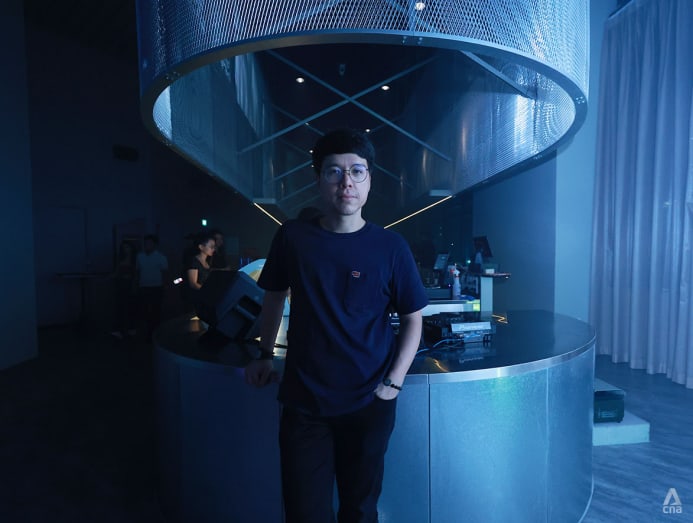
To adapt to the new normal, where public transportation services cease after midnight, a new collective called 5210PM organises parties at various venues that – as its name suggests – starts at 5pm and ends at 10pm.
“With this timing, partygoers would still be able to catch public transport to go home,” the team said.
Blackout Agency’s Mr Kim hopes that the police force can be more lenient with licensing for events. He has tried to apply for licences for unique venues, only to be rejected multiple times, making it “incredibly difficult for those of us who want to think outside of the box”.
“In the end, you’re left with parties that all feel the same and people will eventually lose interest in such repetitive experiences.
"We have amazing spaces across the island, but the red tape often makes it challenging to execute creative ideas,” he said.
Mr Kim also suggested that STB could support more unconventional events such as parties at abandoned buildings, closing off a runway at Seletar Airport or even taking over St John's Island.
“The government could play a key role by providing funding, resources and spaces for experimental events. We need to be less uptight and more open to new ideas.
"This means loosening restrictions, embracing risk-taking and trusting the creative community to deliver fresh concepts.”


.jpg?itok=geFldM_j)
.jpg?itok=LxERYqUN)












